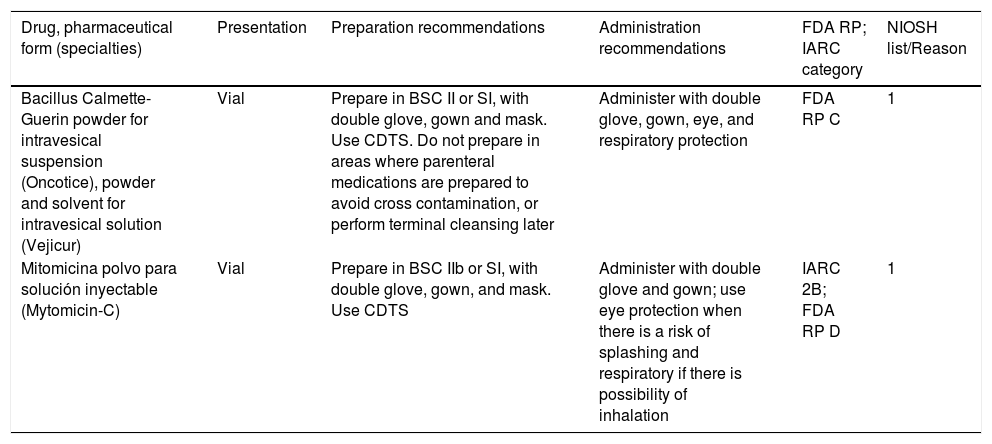The intravesical administration of hazardous drug products is a standard practice in the urology setting, which potentially exposing medical personnel to these drug products. It was deemed necessary to have a consensus document among the scientific societies involved (the Spanish Urological Association and the Spanish Society of Hospital Pharmacy) that collects the best available evidence on the safest handling possible of dangerous drug products in the setting of urology departments.
MethodsWe reviewed the legislation and recommendations on the handling of dangerous drug products, both at the national and international level.
ResultsThere is national legislation and regulations for protecting workers who handle dangerous drugs and products, as well as recommendations for handling to protect both the product and workers.
DiscussionFollowing the strategic lines of the European Parliament for 2014–2020 in the chapter on occupational safety and health, the Spanish Urological Association and the Spanish Society of Hospital Pharmacy proposed a series of actions that decrease the risks of exposure for practitioners and caregivers involved in the handling of these products.
ConclusionsAfter this review, 19 recommendations were established for handling dangerous drug products, which can be summarized as the need to train all individuals involved (from management teams to patients and caregivers), adopt systems that prevent contaminating leaks, implement exposure surveillance programs and optimize available resources.
La administración intravesical de medicamentos peligrosos es una práctica habitual en el ámbito de la urología, con posible exposición del personal sanitario a dichos medicamentos. Se considera necesario disponer de un documento de consenso entre las sociedades científicas implicadas —Asociación Española de Urología y Sociedad Española de Farmacia Hospitalaria— que recoja la mejor evidencia disponible para el manejo, de la forma más segura posible, de medicamentos peligrosos en el ámbito de los servicios de Urología.
MétodosSe ha realizado una revisión de la legislación y de las recomendaciones sobre el manejo de medicamentos peligrosos tanto a nivel estatal como internacional.
ResultadosSe dispone de legislación nacional y de normativas para la protección de los trabajadores que manipulen medicamentos y productos peligrosos, así como recomendaciones de manipulación para la protección tanto del producto, como de los trabajadores.
DiscusiónSiguiendo las líneas estratégicas del Parlamento Europeo para el período 2014-2020 en el capítulo de seguridad y salud laboral, la Asociación Española de Urología y la Sociedad Española de Farmacia Hospitalaria proponen una serie de actuaciones que hagan disminuir los riesgos de exposición a los profesionales y cuidadores implicados en su manejo.
ConclusionesTras esta revisión se establecen 19 recomendaciones para el manejo de medicamentos peligrosos que pueden resumirse en la necesidad de formación de todas las personas implicadas (desde equipos directivos hasta los pacientes y cuidadores), adopción de sistemas que no permitan fugas contaminantes, programas de vigilancia de las exposiciones y optimización de los recursos disponibles.








